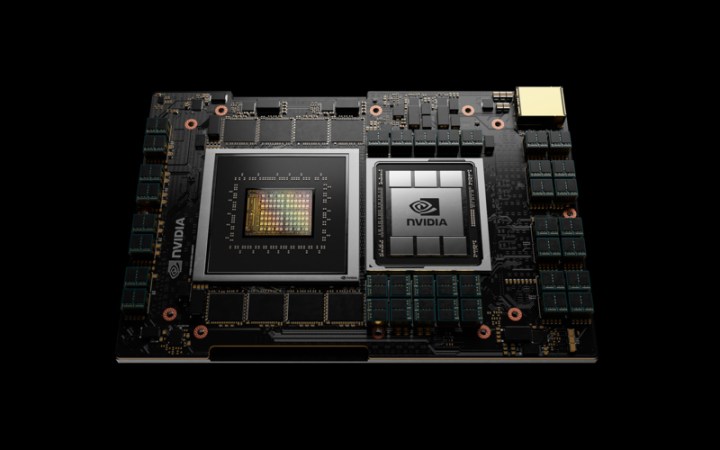Nvidia is warning GPU owners to update their graphics card drivers after the company discovered several high-level security vulnerabilities. ThreatPost reports that Nvidia found bugs in its virtual GPU software and the display driver that’s required for the graphics card to function.
Nvidia has a table showing the drivers for its different product lines across Windows and Linux, but it doesn’t really matter. It seems GeForce, Quadro, and Tesla drivers are vulnerable across Windows and Linux, so it’s best to update your graphics driver regardless.
In total, the company revealed 13 security vulnerabilities, five through the GPU display driver and eight through the vGPU software. Most sit in between 7 and 8 on CVSS 3.1 (Common Vulnerability Scoring System), which is an open standard for rating security vulnerabilities on a scale of 1 to 10.
CVE‑2021‑1074 is one of the most pressing issues, with a base CVSS score of 7.5. This vulnerability shows up in the display driver installer, where an attacker with local system access can replace the installation files with malicious ones. On the other end, CVE‑2021‑1078 received a base score of 5.5, which shows a vulnerability in the kernel driver that could lead to a system crash.

There’s also CVE‑2021‑1085 through the vGPU software (base score of 7.3), which opens the potential to write data to shared memory locations and manipulate it after validation. That could lead to escalation of privileges and denial of service.
If you just have an Nvidia graphics card, you don’t need to worry about the vGPU vulnerabilities. The vGPU software is built for the data center, allowing operators to share graphics card power across several virtual machines. Nvidia recommends updating your graphics card driver through the Nvidia driver download page and the vGPU software through the Nvidia licensing portal (if you have access to it).

The vulnerabilities highlight the importance of updating your software and drivers regularly. Earlier this year, Nvidia fixed several vulnerabilities in its display driver, and it continues to push updates whenever vulnerabilities show up. The current batch of problems may lead to malicious code execution (ransomware, etc.), escalation of privileges, data disclosure, data corruption, and/or denial of service, so you should update your GPU driver as soon as possible.
All of the issues come through software, so it doesn’t matter which graphics card you have. Even with a last-gen or older GPU — a likely situation given the ongoing graphics card shortage — you still need to update your driver.




